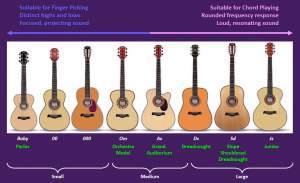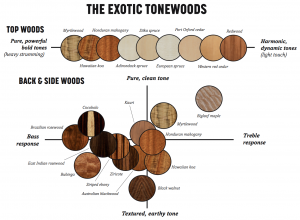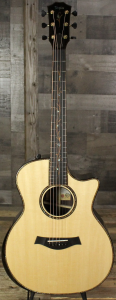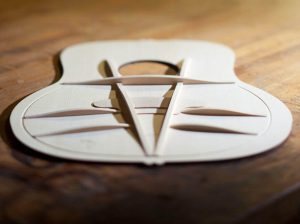Picking Your Next Guitar – Tone, Response & Body (Part 1 of 3)
Picking Your Next Guitar – Choosing Woods (Part 2 of 3)
Picking Your Next Guitar – Body Size & Playing Style (Part 3 of 3)
The body size of a guitar has a direct impact on the sound it produces. A smaller guitar body will produce a brighter, thinner sound, while a larger guitar body will produce a warmer, fuller sound. This is due to the fact that larger guitars have more air volume, which leads to longer sustain and more low-end frequencies. Additionally, the shape of the guitar body also plays a role in its sound. For example, a dreadnought guitar (a very popular style of an acoustic guitar) has a large body with rounded shoulders and a powerful bass response.
To better understand how body size affects the sound, let’s break down the common types of guitar body sizes, starting with smaller to larger body sizes (or sound boxes).
- Baby or Parlor
- 00
- 000
- Om or Orchestra Model
- As or Grand Auditorium
- Ds or Dreadnought
- Sd or Slope Shouldered Dreadnought
- Js or Jumbo
Small-bodied guitars (Baby, 00, and 000) are typically not as loud as their larger counterparts, but they offer a brighter, more articulate sound. These guitars are great for players who want to be able to hear every note they play clearly. Small-bodied guitars are also very comfortable to play, making them a good choice for players with a smaller frames. Small-bodied guitars are that they are great for projecting focussed sound. They are very bright sounding with distinct highs and lows which makes them perfect for fingerpicking, as each note makes a distinct and clear sound. Examples of small-bodied guitars include the Martin 000c and the Taylor Baby BT2.
Medium-bodied guitars (Om, As) strike a balance between volume and comfort. These instruments are not as loud as large-bodied guitars, but they’re still plenty loud enough for most gigging situations. Medium-bodied guitars offer a warm, well-rounded sound that is great for all genres of music. They are the best of both playing styles – the finger-picking sounds of small-bodied guitars and chord playing in larger-bodied guitars. When paired with some unique woods and construction, they can really emulate the sound profile of both of them. Examples of medium-bodied guitars include the Gibson J45 and the Guild D150ce.
Lastly, the Large-bodied guitars (Ds, Sd, and Jumbo) are the loudest and most powerful type of guitar. They have a deep, commanding sound that is perfect for rock and metal music. These guitars can be quite expensive, so they’re usually only purchased by experienced players who know exactly what they’re looking for in an instrument. They are also more suitable for chord players, who want a resonating sound. Jumbo size is the largest size of the guitar. Often, 12-string guitars are Large-Bodied. Examples of large-bodied guitars include the Gibson Les Paul and the PRS Custom 24.
The size of your guitar’s body plays a significant role in shaping its overall sound. If you’re looking for a bright, articulate tone, then a small-bodied guitar is the way to go. If you want a warm, well-rounded sound, then you’ll be better off with a medium-bodied guitar. And if you’re looking for a powerful, aggressive sound, then you’ll need to purchase a large-bodied guitar. No matter what type of sound you’re going for, there’s definitely a guitar out there that will suit your needs!
And always, trust your ear!
JPS Nagi
Sept. 19, 2022




